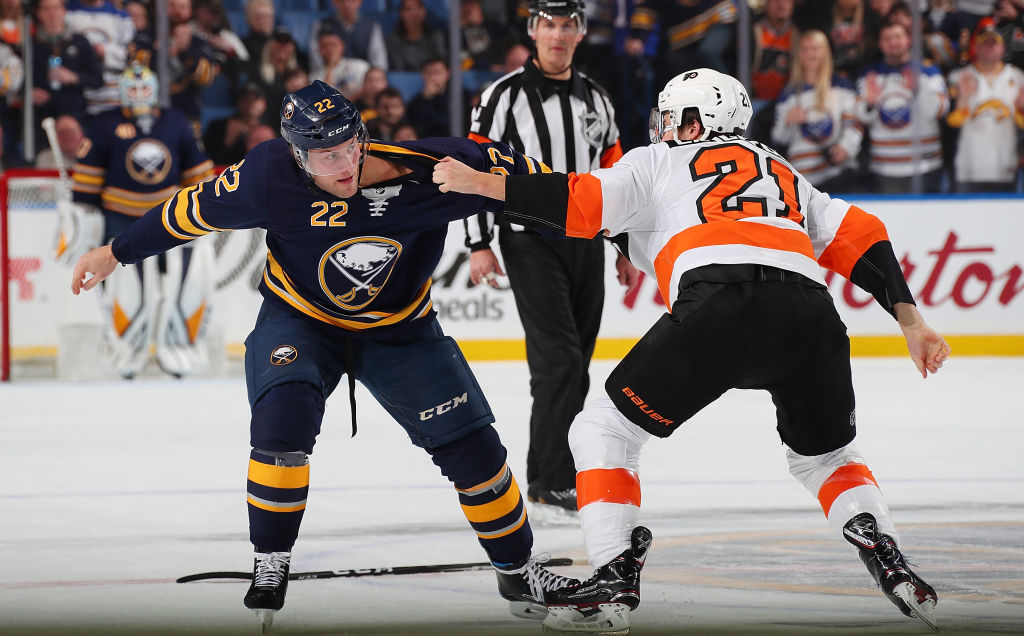NHL
NHL: Wells Fargo Center Adds One Crazy Amenity to Help Stressed Philadelphia Flyers Fans

These days, sports arenas are more comfortable than ever. Seats are roomier and have more legroom, concessions have moved beyond stale popcorn and soggy hot dogs, and there are countless diversions if you don’t want to watch the game. The Philadelphia Flyers, however, are offering their fans a brand new amenity at the Wells Fargo Center.
During this season, any Flyers fan who is feeling stressed will be able to visit a “rage room” and relieve their frustrations without ever leaving the arena.
Finding the Flyers’ rage room
If you’re attending a Philadelphia Flyers game this season and want to take out your aggression, you’ll have to visit the team’s new “Assembly Room” lounge. If you’re able to find a doorway hidden behind a bookshelf, you’ll be able to enter the “Disassembly Room.”
For an additional fee—$35 for a single fan or $60 for a group of two—you’ll receive access to the “rage room.” Every entrant will have five minutes to smash a bucket of smaller items and one larger item, using orange and black sledgehammers and hockey sticks.
“The concept is definitely one-of-a-kind and non-traditional,” Valerie Camillo, president of business operations of the Flyers and the Wells Fargo Center, explained. “We ran the concept by some of our fans who told us they thought this would be a fresh way to have some harmless fun.” The concept actually seems specifically suited to Flyers fans in two ways.
The Broad Street Bullies
During the early days of the franchise, the Philadelphia Flyers established a reputation as the toughest team in the NHL. While other squads were centered around talented star players, the Flyers focused on the more physical side of the game. The club built a roster of skilled players who could also drop the gloves, like Bobby Clarke, Dave “The Hammer” Schultz, and Bob “Hound Dog” Kelly and dared anyone to try to get in their way.
The strategy worked as the Flyers lifted the Stanley Cup in the 1973-74 and 1974-75 campaigns; physicality was the franchise’s calling card. No matter how the players and coaches changed, the Philadelphia Flyers would always be up for a fight. Decades later, it’s only fair to let fans get in on the action and unleash their fury in the “rage room.”
Decades of Philadelphia Flyers frustration
While physicality carried the Flyers to two championships, it also doomed the franchise to decades of frustration. Ever since those title-winning seasons, the organization has been obsessed with its image as the Broad Street Bullies. Even as the NHL has moved more towards speed and skill, the Flyers have tried to bruise their way back to the title.
That stubborn determination—combined with perpetually ineffective goaltending—has yielded decades of frustration. While the Flyers have consistently made the playoffs, they haven’t lifted the Stanley Cup since 1975; they haven’t even made it past the first round of the playoffs since 2012.
This season, the Flyers still have plenty of question marks. Alain Vigneault—for all of his failings—can get a team’s regular season offense rolling, but pairing him with two veteran assistants could create a bit of a muddled identity on the bench. Carter Hart definitely has the potential to succeed in net, but it’s risky to pin the fate of your franchise on a young goaltender.
If things click on the ice, the entire city of Philadelphia can breathe a sigh of relief. But, if things don’t work out, the Flyers’ new rage room will undoubtedly be busy.











